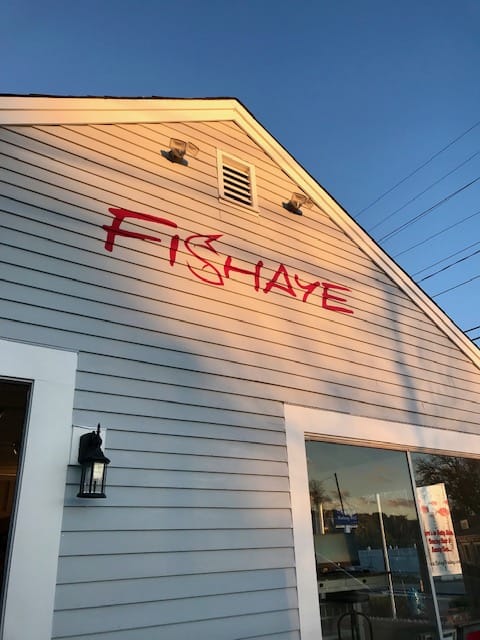
Gyotaku art began in Japan in the mid-1800s. It is a method of printmaking using fish and other sea animals as printing plates. Translated literally, gyo means “fish” and taku means “rubbing.” It was originally used by Japanese fisherman to record their catches. Fisherman actually carried ink and supplies with them on boats, so as to make a record of their freshly caught fish. The fish was then washed and eaten – a tradition that has led to the gyotaku three step motto: Catch It. Ink It. Eat It.
It is still used for that purpose today. If you were to visit tackle shops in Japan, you would find gyotaku hanging on the walls; however, over the years, it has become its own art form.
There are actually three different approaches to gyotaku in the modern world. The first or “direct” method, chokusetsu-hō, is the closest to the original method using sumi ink. The fish is cleaned, prepped, supported, then inked. Following that, an image is created by pressing washi paper (made from rice) to the fish and rubbing or pressing. Because, these prints are more to serve a purpose, such as recording the fisherman’s catch or settling on a winner in a fishing competition, they are often left in black and white with no coloration except gray-scale around the eyes.
The second approach, or “indirect” approach is for the more artistic and is called kansetsu-hō. In this method, the washi paper – or sometimes silk or other fabric – is adhered to the fish using rice paste. The ink is then applied to the surface delicately with applicators of silk wrapped around cotton. This approach is preferred by some artists, but is much more time consuming, resulting in very delicate and detailed images. Color is usually added to these images.
Thirdly, the “transfer” method, or tensha-hō, is used to create images on harder surfaces such as wood, leather or stone. The fish is prepped and inked as in the direct method and then carefully lifted by pressing a piece of nylon to the it. The nylon with the image is then pressed to a harder surface, thus “transferring” the image.
In Western Culture, gyotaku could be compared to what we would call “nature prints” where leaves and flowers were coated on both sides with ink and pressed to paper to make prints. Today, the direct method of gyotaku is used on a variety of subjects throughout the world. Artists now have moved beyond fish and use other animals and plants as subjects as well as implementing different types of colors and surfaces.
At Fishaye Trading Co., artist and owner John F. Doherty has his own method of gyotaku. “I use the following method to make the image look as natural as can be,” he says. “First, I mix up paint or ink and then apply it directly on the fish. Next, I simply cover the fish with fine paper or fabric and gently rub.” To check out John’s work, click here. https://www.fishayetrading.com/


Recent Comments